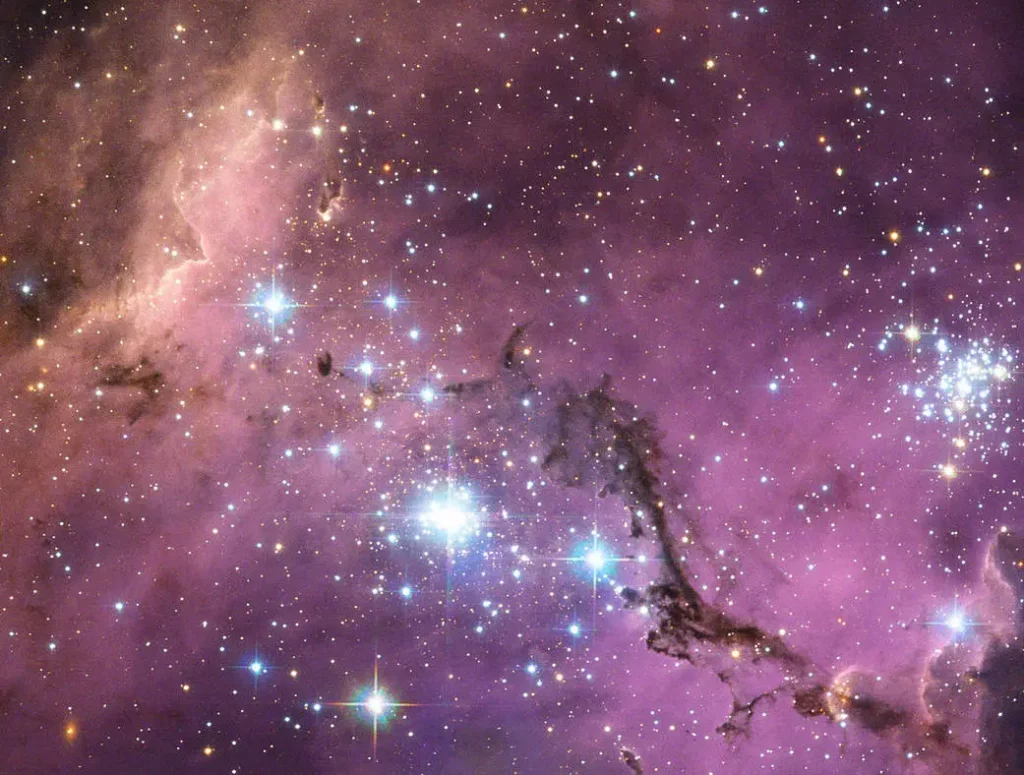For all its darkness, the cosmos certain can shock us with astoundingly shiny phenomena. Such is the case in a heavenly new picture launched by area scientists, which exhibits the good results of stars being shaped.
“An enormous cluster is born,” declares the ESA (European Area Company), upon revealing the picture. Scientists say it exhibits N79, a large star-forming area inside the Massive Magellanic Cloud (LMC), a satellite tv for pc galaxy of the Milky Means.
The Massive Magellanic Cloud (LMC) is a gorgeous dwarf galaxy orbiting the Milky Means, situated at a distance of about 163,000 light-years away. It’s the fourth-largest galaxy in our Native Group, making it a detailed neighbor within the grand scheme of the universe.
The spectacular new picture from the James Webb Telescope reveals glowing gasoline and mud deep inside the clouds, in addition to “embedded child stars.”
N79 spans roughly 1630 light-years within the typically unexplored southwest area of the LMC. NASA’s Webb Telescope’s X account (previously Twitter) dramatically commented, “It’s at all times darkest earlier than the daybreak.”
Learning N79 permits us to glimpse into the early universe, providing clues about how stars shaped within the distant previous. Its abundance of heavy parts, solid in earlier generations of stars, supplies useful insights into the chemical evolution of galaxies.
“N79 produces stars at a livid price, a lot sooner than star-forming areas present in our personal galaxy. In actual fact, N79’s chemical composition is much like these from the early universe, when star formation was at its peak,” writes the ESA. “Right here, these vivid rays resembling daylight are literally diffraction spikes. Most noticeable for shiny, compact objects, diffraction spikes are considerably like a telescope’s ‘signature.’”

“The eight-point sample is the results of the telescope’s hexagonal mirror design, mixed with its secondary mirror struts. In the meantime, NASA’s Hubble Area Telescope produces a four-pointed diffraction spike sample as a consequence of its round mirror,” the ESA continues.
The James Webb Area Telescope is designed to conduct infrared astronomy. Its high-resolution and high-sensitivity devices permit it to view objects too previous, distant, or faint for the Hubble Area Telescope.
South West Information Service author Dean Murray contributed to this report.




